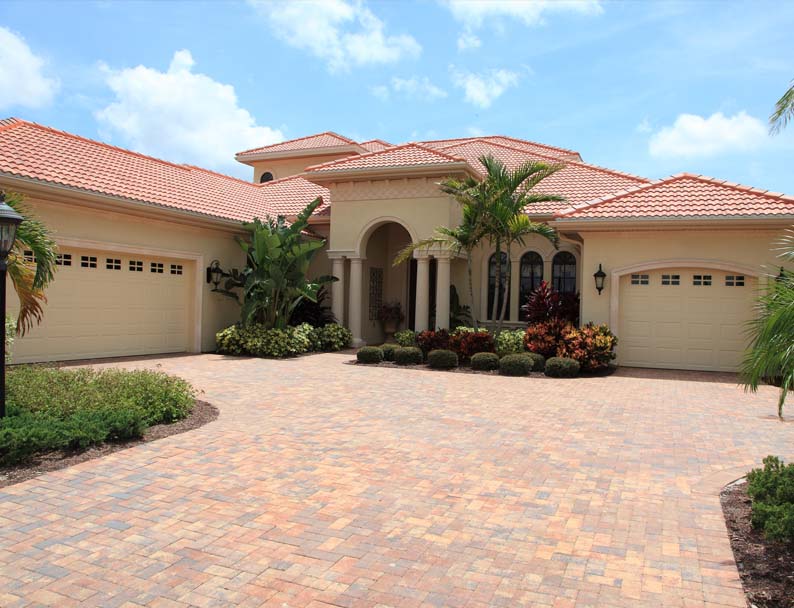In a world where innovation is the driving force behind progress, the construction industry stands at the forefront of groundbreaking transformations – embracing the power of technology to revolutionize how we build our future. Welcome to a realm where steel and concrete meet cutting-edge advancements, where hammer and nail are complemented by algorithms and automation. This blog post delves deep into the dynamic landscape of construction, where the traditional blueprint meets the digital realm, ushering in a new era of efficiency and precision. As we embark on a journey through the ever-evolving realm of construction technology, prepare to witness an industry in metamorphosis – one where 3D printing constructs homes, drones survey landscapes with unprecedented accuracy, and artificial intelligence orchestrates project management with unparalleled finesse. The fusion of physical labor with digital dexterity is not just a trend but a fundamental shift that is reshaping the very foundation of how we envision, plan, and execute building projects. Join us as we unravel the intricate tapestry of Technology in Construction, where innovation is not just a choice but a necessity for those who strive to stay ahead in the race towards progress.
The Regulatory Landscape of Construction in Florida
Florida’s construction industry is subject to a complex regulatory landscape that governs various aspects of building projects. From zoning and permitting to safety codes and environmental regulations, these rules ensure that construction activities are carried out in a manner that protects the interests of both the public and the environment. However, keeping up with these regulations can be challenging for homeowners and developers alike.
Regulatory changes are a common occurrence in the construction industry, as lawmakers constantly strive to improve safety standards, promote sustainable practices, and address emerging challenges. Staying informed about these changes is crucial for homeowners and developers to ensure compliance with the law and avoid potential legal issues.
One recent regulatory change in Florida is the update to building codes. These codes outline the minimum requirements for constructing safe and resilient buildings. They cover various aspects such as structural integrity, fire safety, energy efficiency, accessibility, and more. Compliance with building codes is essential for homeowners to protect their investment and ensure the safety of occupants.
For developers, understanding building codes is equally important as non-compliance can lead to costly delays or even project shutdowns. It is crucial for developers to work closely with architects, engineers, and contractors who have expertise in navigating these codes to ensure that their projects meet all necessary requirements.
Impact of Building Codes on Homeowners and Developers
The impact of building codes on homeowners and developers cannot be overstated. These regulations play a vital role in safeguarding lives and property by setting standards for construction practices. By adhering to building codes, homeowners can have peace of mind knowing that their homes are built according to established safety guidelines.
Developers also benefit from complying with building codes as it helps them build structures that are resilient against natural disasters such as hurricanes or earthquakes. Additionally, meeting building code requirements can enhance the marketability of a property, as potential buyers or tenants are more likely to be attracted to buildings that prioritize safety and quality.
However, it is important to note that building codes can also present challenges for homeowners and developers. Compliance with these codes often comes at a cost, as meeting certain requirements may require additional materials or design modifications. This can increase construction expenses, which may be passed on to homeowners or affect the profitability of development projects.
Furthermore, keeping up with changes in building codes can be a daunting task. Codes are periodically updated to reflect advancements in construction practices and address emerging concerns. Homeowners and developers must stay informed about these changes and ensure that their projects meet the latest requirements.
Leveraging Digital Tools for Compliance and Efficiency
In an era where technology is rapidly transforming industries, the construction sector is no exception. Digital tools have revolutionized how construction projects are planned, executed, and monitored. These tools not only enhance efficiency but also facilitate compliance with regulatory requirements.
One such digital tool is Building Information Modeling (BIM), which enables stakeholders to create virtual representations of buildings before they are constructed. BIM allows architects, engineers, contractors, and other professionals to collaborate effectively throughout the project lifecycle. By visualizing the entire building process digitally, potential issues can be identified early on, reducing costly rework and ensuring compliance with regulations.
Another digital tool that aids in compliance is permit management software. Navigating permitting processes can be time-consuming and complex. Permit management software streamlines this process by automating paperwork submission, tracking approvals, and providing real-time updates on permit status. This helps homeowners and developers stay organized while ensuring that all necessary permits are obtained in a timely manner.
Additionally, drones equipped with advanced imaging technology have become invaluable tools for surveying construction sites. They can capture high-resolution aerial images and create accurate topographic maps, enabling developers to assess site conditions and plan accordingly. Drones also help monitor construction progress, ensuring compliance with project timelines and regulatory requirements.
Sustainable Construction Practices in the Sunshine State
Florida’s unique climate and environmental challenges have led to an increased focus on sustainable construction practices. With rising concerns about climate change and the need to conserve resources, homeowners and developers are embracing sustainable building techniques that minimize environmental impact.
One aspect of sustainable construction is energy efficiency. Florida’s warm climate necessitates effective cooling systems in buildings, which can consume significant amounts of energy. By incorporating energy-efficient designs, such as proper insulation, high-performance windows, and efficient HVAC systems, homeowners can reduce their energy consumption and lower utility bills.
Developers are also adopting sustainable practices by utilizing renewable energy sources such as solar power. Installing solar panels on rooftops or incorporating solar farms into new developments not only reduces reliance on fossil fuels but also provides long-term cost savings for homeowners or tenants.
Furthermore, water conservation is a critical consideration in Florida due to its vulnerability to droughts. Sustainable construction practices include implementing water-efficient fixtures, such as low-flow toilets and faucets, as well as utilizing landscaping techniques that minimize water usage.
Navigating Permitting Processes with Technology
The permitting process is an essential step in any construction project. It ensures that proposed structures comply with zoning regulations, building codes, environmental requirements, and other applicable laws. However, navigating through the permitting process can be time-consuming and complex.
Fortunately, technology has simplified this process by introducing online permit application systems. These systems allow homeowners and developers to submit permit applications electronically, eliminating the need for physical paperwork submission. Online platforms also provide access to comprehensive information about permit requirements, fees, and necessary documentation.
Moreover, some municipalities have implemented e-permitting systems that enable real-time tracking of permit applications. This transparency allows homeowners and developers to monitor the progress of their applications and receive notifications when approvals or inspections are required.
By leveraging technology to navigate permitting processes, homeowners and developers can save time, reduce paperwork, and ensure compliance with all necessary regulations.
Addressing Challenges in Adopting New Construction Technologies
The adoption of new construction technologies presents both opportunities and challenges for homeowners and developers. While these technologies offer numerous benefits such as increased efficiency, improved safety, and cost savings, their implementation may require overcoming certain barriers.
One challenge is the initial investment required to adopt new technologies. Upgrading equipment, training staff, and integrating new systems can be costly. However, it is important to consider the long-term benefits and potential return on investment that these technologies can provide.
Another challenge is the resistance to change within the industry. Construction has traditionally been a labor-intensive sector, and the introduction of automation or AI may raise concerns about job displacement. However, embracing new technologies can actually create new job opportunities and enhance productivity.
Furthermore, ensuring interoperability between different technologies can be a challenge. Integrating various software systems or equipment from different vendors may require technical expertise and compatibility testing.
To address these challenges, homeowners and developers should carefully evaluate their specific needs and goals before adopting new technologies. Conducting thorough research, seeking expert advice, and gradually implementing changes can help mitigate risks associated with technology adoption.
Future Trends: The Evolution of Construction in Florida
The construction industry in Florida is poised for further evolution as technological advancements continue to reshape the way projects are conceived and executed. Several trends are expected to shape the future of construction in the Sunshine State:
1. Off-site construction: Prefabrication and modular construction methods are gaining popularity due to their efficiency and cost-effectiveness. These methods involve constructing building components off-site in controlled environments before assembling them on-site.
2. Augmented reality (AR) and virtual reality (VR): AR and VR technologies enable stakeholders to visualize designs in 3D or even experience virtual walkthroughs of buildings before they are constructed. This enhances communication, reduces errors, and improves decision-making throughout the project lifecycle.
3. Robotics: Robots are increasingly being used for tasks such as bricklaying, concrete pouring, or demolition. Robotic systems offer precision, speed, and safety advantages over traditional manual labor.
4. Internet of Things (IoT): IoT devices can be embedded in buildings to collect and transmit data, enabling real-time monitoring of various parameters such as energy consumption, occupancy levels, or equipment performance. This data-driven approach enhances operational efficiency and enables predictive maintenance.
5. 3D printing: Additive manufacturing techniques are revolutionizing the construction industry by enabling the creation of complex structures using materials such as concrete or plastic. 3D printing offers faster construction times, reduced waste, and increased design flexibility.
Ensuring Quality and Safety Amid Technological Advancements
While technological advancements bring numerous benefits to the construction industry, ensuring quality and safety remains paramount. Homeowners and developers must prioritize compliance with regulations and implement robust quality control measures throughout the construction process.
Regular inspections by qualified professionals are essential to identify any potential issues or deviations from plans. Additionally, ongoing training for construction workers on new technologies and safety protocols is crucial to maintain high standards of workmanship.
Collaboration between all stakeholders involved in a project is also vital for ensuring quality and safety. Effective communication channels should be established to address any concerns or questions that may arise during construction.
Furthermore, it is important for homeowners and developers to engage reputable contractors who have a track record of delivering high-quality projects while adhering to regulatory requirements.
In conclusion, Florida’s construction industry operates within a regulatory landscape that aims to ensure safety, sustainability, and compliance with building codes. Homeowners and developers must stay informed about regulatory changes affecting the industry while leveraging digital tools for efficiency and compliance. The adoption of new technologies presents both opportunities and challenges but can ultimately lead to improved project outcomes. By embracing innovation while prioritizing quality and safety, Florida’s construction sector can continue its evolution towards a more sustainable future.


